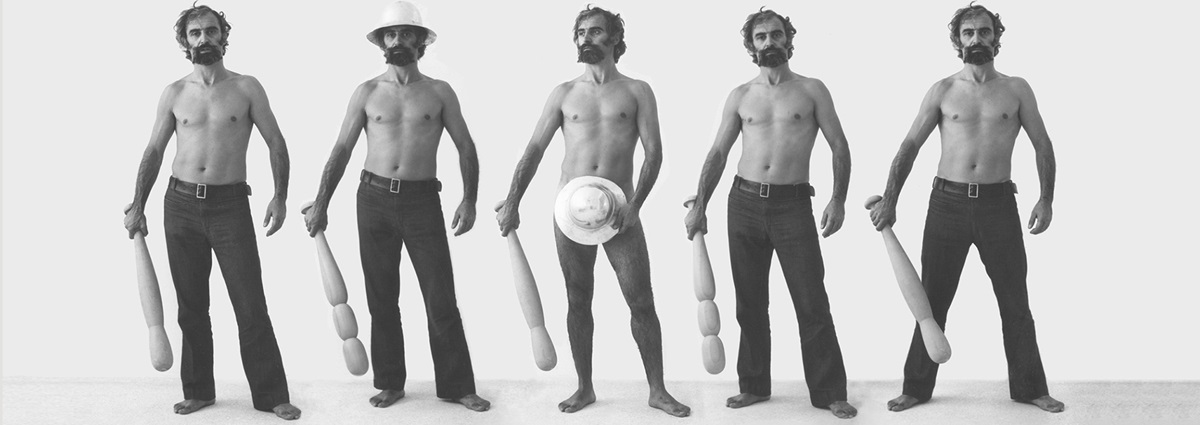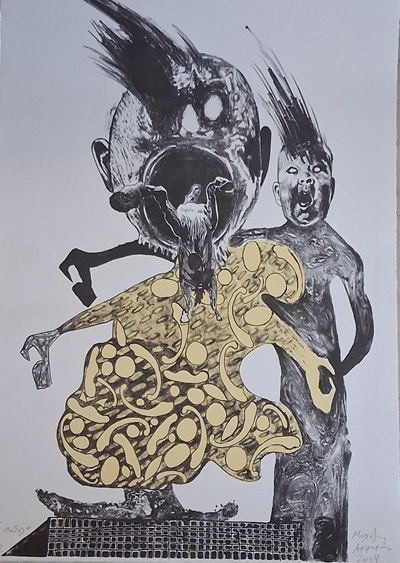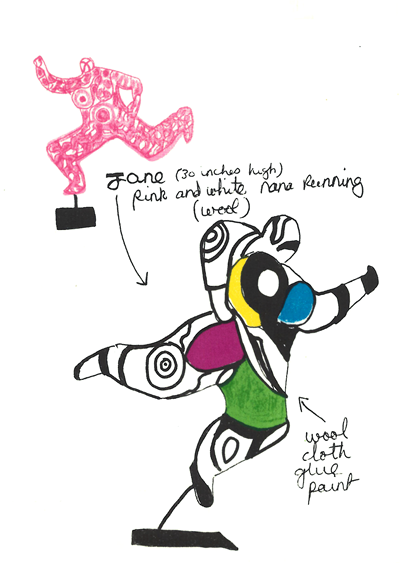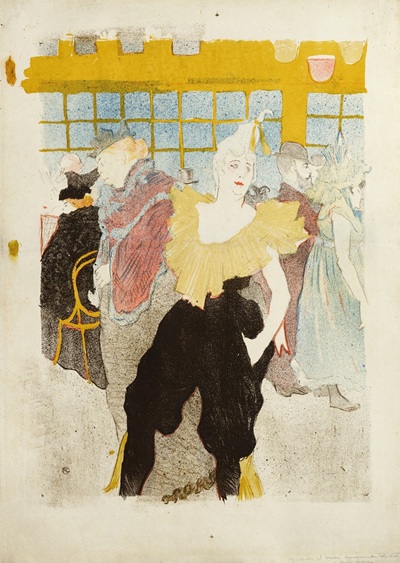
By Venia Pastaka
Art Historian
“…If Art today is acrobatics, it is not enough to dress up in the costume of a tightrope walker. We must be able to walk a tightrope… we dare and doubt.”
(Theodoros, Sculptor, Stigmata of Progress, traces in the sand of words, Athens 1984, p. 17.)
A restless, inquisitive and pioneering spirit, Theodoros (Papadimitriou) was one of the most important artists of modern Greek art. Born in 1931 in Agrinio, he studied from 1952 to 1957 at the Athens School of Fine Arts, in the workshop of Michalis Tombros (1889-1974), while from 1959 to 1962, having received support from the State Scholarship Foundation, he continued his studies at the famous École Nationale Supérieure des Beaux-Arts, and at the same time at the Académie du feu, where he studied metalworking. Still, he attended seminars on urban landscape at the Camelot and Bodiansky architecture workshop. In 1972 he taught at California State University and in 1980 he was elected professor of plastics at the Faculty of Architecture of the National Technical University of Athens. He has had major exhibitions in Greece and abroad and has collaborated for years with Desmos Art Gallery and the Ileana Tounta Center for Contemporary Art. In 1965, Theodoros was awarded the Rodin Prize at the Paris Biennale for Young Artists and had been exhibiting since 1961. Participation in Biennales and International Sculpture Exhibitions followed, which made him one of the few Greek artists with international recognition for his work.
From 8 February, the National Museum of Contemporary Art (ΕΜΣΤ), presents for the first time since the artist’s demise in 2018, an attempt to interpret his imprint through almost all of his work and the archival material he bequeathed to the Museum along with his studio. Through 11 sections (curated by Stamatis Schizakis and designed by Yannis Arvanitis), the visitor has the opportunity to explore the sculptor’s world and to understand the significance of his work at the time it was created. Following a non-chronological order, the sections present the artist’s milestones as well as the mental process behind their creation. The tour starts from the station Instead of a Sculpture Work. Returning to Greece from abroad in the late 1960s, as the Military Junta had forced everyone who had received a state scholarship to return or else they would have to give back the money they had received, Theo created a manifesto for the new sculpture as it was formed within the historical conditions of the time. The second section is entitled Treatments and Tests, works made between 1973 and 1982 in which the artist explores the relationship between sculpture and other artistic media. The third section, is his iconic work Matrack – Phallus. In 1965, on the occasion of the murder of the student Sotiris Petroulas, Theodoros created the work The Midnight Alarm Clock. In this project, there was a baton which was inserted into the marble pedestal of the work, and which could be controlled by the spectator to produce sound. The ambivalence between creation and violence led to the Matrack – Phallus; a work that evokes a phallus, a sculptor’s mantraca or a police club. The fourth section is called From gesture to manipulation and consists of sculptural gestures by the artist in metal or clay. Moving on to the fifth section, we find ourselves in the presence of the Sound of Sculpture, the period of works in which the artist incorporated recorded texts or live speech. In the section entitled Transitions – Equilibria, which includes early works from the period 1963-1967, the artist plays with the laws of physics, creating meteoric sculptures, or sculptures in which he balances the fragile with the hard material. In the seventh section, called Traces of Touch, the viewer finds the artist who claims his place in the public sphere, exploiting the media. The eighth section, Conservation – Preservation, deals with the social role of art, while the next section, Tele – Handling, presents the astonishing film created under the direction of George Emirza (1936-1999). The tenth section is Antispectacle. It is Theodoro’s commentary and counter-proposal to television culture. The course of the exhibition culminates with the eleventh section, the Garden. Always interested in the place of sculpture in public space, an artificial garden was created within the museum, in which his sculptures dominate and interact with the viewer.
An important addition to the exhibition is the inclusion of contemporary artists in it, such as Nikos Arvanitis, Paky Vlassopoulou, Iris and Leda Lykourioti, Kostas Bassanos and Yannis Papadopoulos, who have critically interacted with the corresponding timeless concerns that can be found in Theodoros’ work. This addition ties in extremely well with the artist’s own words, who wrote in 1966 “…I prefer to look for you – I find you through my works. And if I do not succeed, let me believe that I am ahead of my time, i.e. that I will find my viewers in your descendants“. (Ibid., p. 28, from a text written in Paris in 1966.)
The oeuvre of Theodoros is undoubtedly a demanding one. It is not a sculpture that is meant to simply please, but mainly to educate and reflect. The sculptor belongs to that generation of artists who considered it their duty to cultivate the intellectual culture of their audience. Without sacrificing their visual means, but using them in many ways, they prepared the ground for the creation of a thinking recipient. At the same time, while often criticizing society and the establishment through his work, Theodoros was an artist whose work was also included in institutional collections through commissions, creating an artistic paradox. This intellectual and artistic genius is what one has the opportunity to experience in the exhibition running at the National Museum of Contemporary Art, where visitors will realize that the fruitful dialogue with the work continues to be alive even when its creator is no longer present.







Leave A Comment